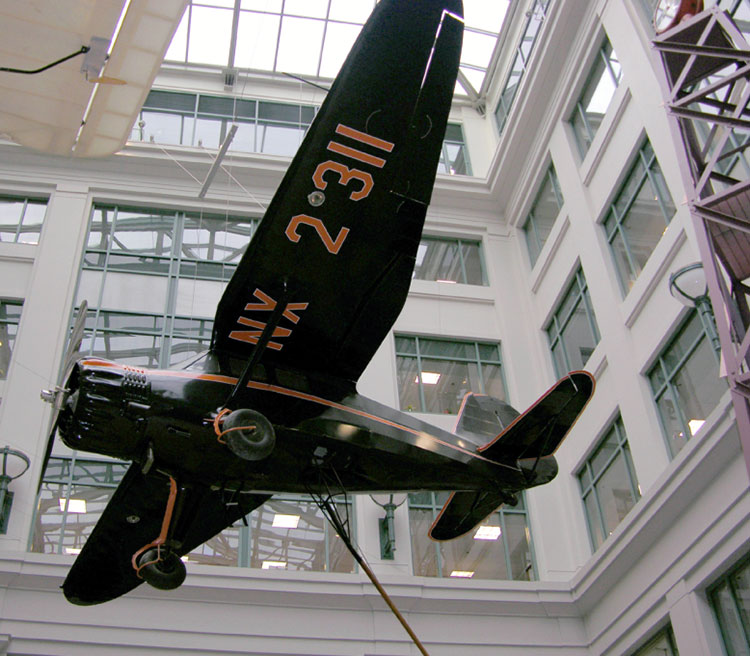Air Pick-Up “Catches On” Beyond the World of Airmail
By Erin Blasco, Public Programs Coordinator
Museum visitors often ask “Why is there a stick coming out of that airplane?” Take a look and see if you can figure out what function the “stick” performed:
The boom protruding from the museum’s Stinson-Reliant airplane was lowered to snatch a canister of mail suspended between two poles. The flight officer would also eject the mail for that community from the plane in a special container designed to survive repeated drops. Inspired by mail-on-the-fly exchanges performed by the Railway Mail Service, “air pick-up” and was invented by Dr. Lytle Adams, a dentist and part-time inventor. It provided airmail to communities without airports.
The service began on May 12, 1939 and carried airmail for ten years, a period during which mail volume boomed due to World War II correspondence. The service lasted ten years. Normal Rintoul, the pilot who had flown the first air pick-up flight, piloted the plane for the service’s final flight in 1949. Later that year, Rintoul donated a Stinson-Reliant that had performed air pick-ups to the Smithsonian.
I always assumed that the story ended with Mr. Rintoul’s last flight. Dr. Adams’ idea was a creative solution to a short-lived problem, but I considered it preposterous that pick-up had any use beyond 1949. I was wrong.
Gary Ell, creative marketing director at Zodiac Aerospace, spoke at the museum on Saturday about how pick-up was used for many years after the planes stopped carrying mail and, in fact, is still in use today.
The engineering arm of All American Aviation developed Dr. Adams’ original idea, creating “aircraft arresting systems” for military and civilian use. Watch the complete presentation to see amazing footage of human pick-ups (gasp!) as well as a very nifty way to get engine-less gliders airborne by pulling them behind another aircraft. I was started by modern-day uses based on the original idea.
Some solutions to postal challenges (missile mail, pneumatic mail) have failed to catch on while we can thank the postal system for some innovations (well-lit streets, passenger flight) that made an impact well beyond the world of mail. It’s refreshing to know that Dr. Adams’ invention had as much potential as he thought it did!

